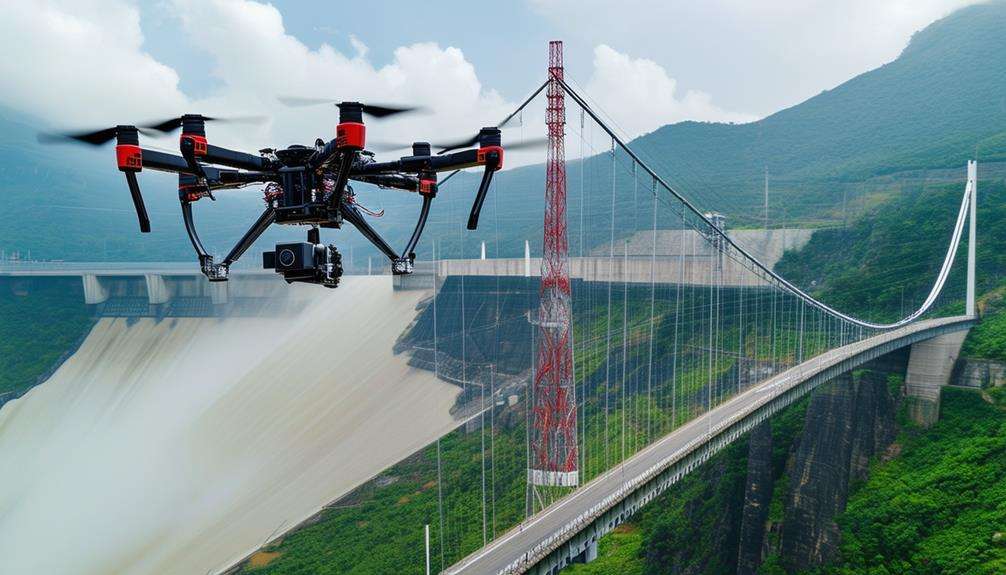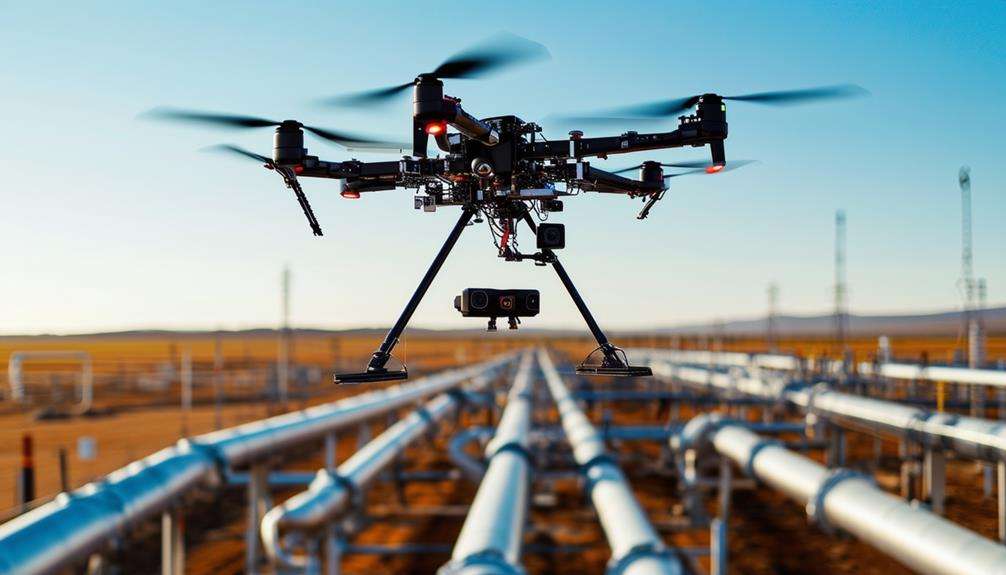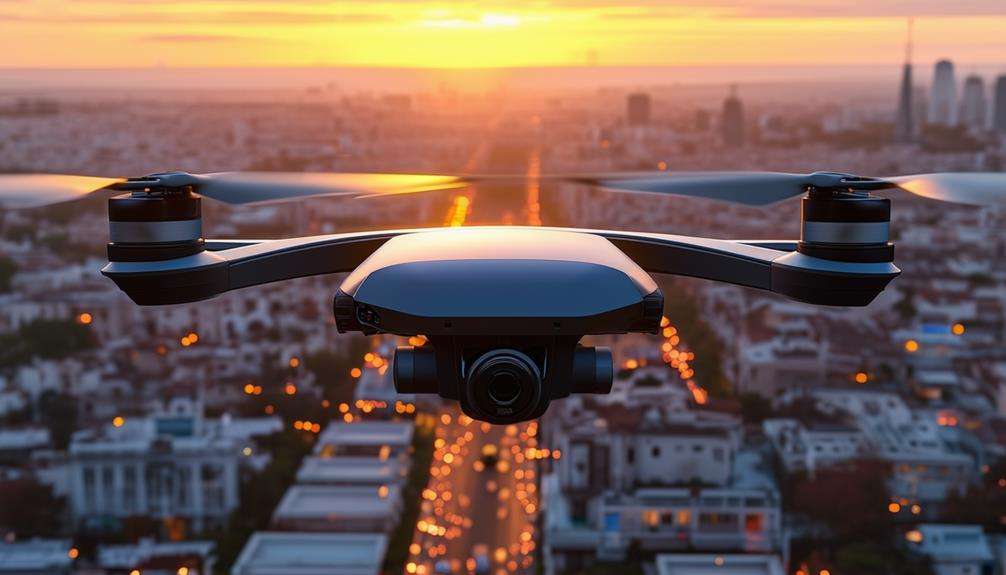The Economic Impact of the Commercial Drone Industry
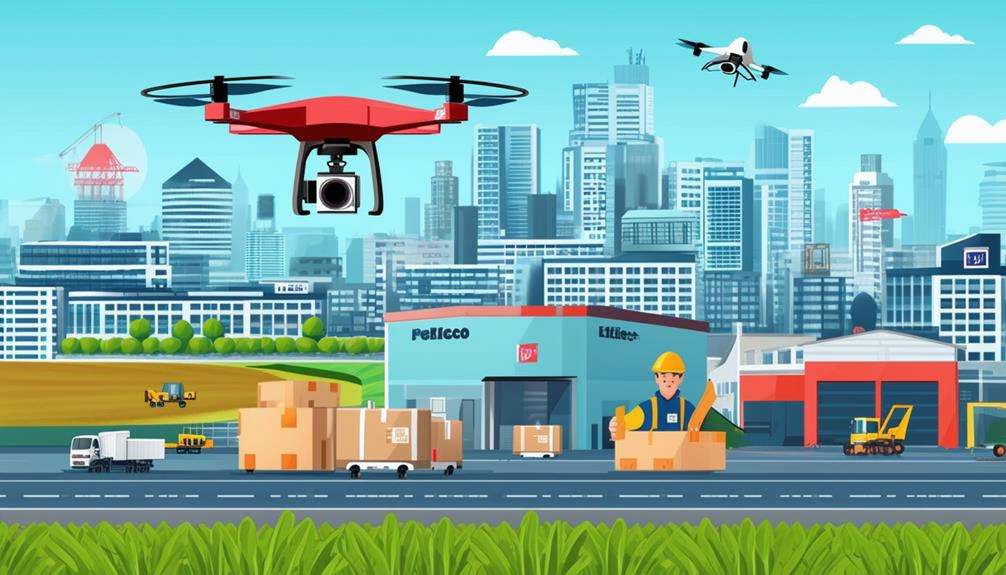
The commercial drone industry is significantly impacting the global economy, demonstrating more than just a passing trend. With a market size approaching $20 billion in 2022 and an anticipated growth rate of 13.9% through 2030, its influence is substantial. Key drivers include cost savings and enhanced efficiency, with an estimated $48 billion in savings projected from 2020 to 2050 across various sectors.
However, the industry faces numerous challenges, and understanding these obstacles is crucial for unlocking further potential. Interested in what's on the horizon? Let's delve deeper.
Market Trends
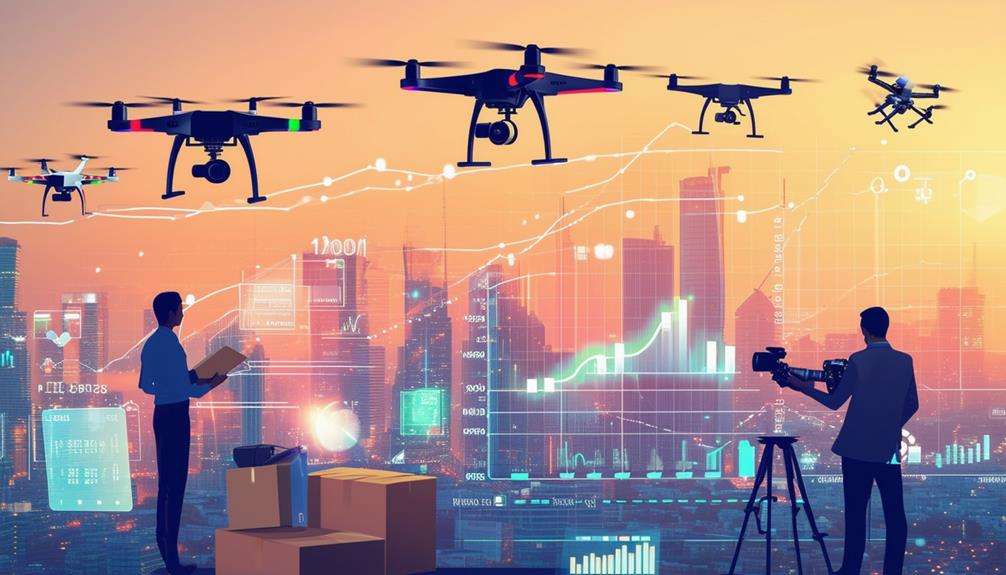
The commercial drone market is experiencing a significant surge, with a global market size of nearly $20 billion in 2022 and a projected growth rate of 13.9% through 2030. In the United States, this industry's rapid expansion is revolutionizing various sectors, including agriculture and logistics. As drone technology advances, it becomes increasingly integral to business operations, driving substantial economic impact.
U.S. companies are at the forefront of annual spending on drones, aiming to leverage their potential for enhanced efficiency and innovation. Although initial setbacks occurred due to FAA regulations focusing on safety and privacy, the industry is now gaining momentum. These advancements are set to transform business operations, offering previously unimaginable solutions.
The economic impact of this burgeoning market extends beyond the U.S. While the global market experienced a decline during the pandemic, dropping from $4.14 billion in 2019 to $3.64 billion in 2020, it has since rebounded robustly. As the market continues to grow, the commercial drone industry will likely play a crucial role in shaping the future of global economies, making it a compelling space to watch and invest in.
Key Growth Drivers
A multitude of factors drive the explosive growth of the commercial drone industry, propelling it towards unprecedented economic impact. In the United States, commercial drones, also known as unmanned aerial vehicles (UAVs), are revolutionizing various sectors. Companies like Amazon, Alphabet, and FedEx are at the forefront, actively developing drone delivery services despite regulatory challenges. These innovations promise to enhance delivery efficiency and significantly reduce costs.
The drone industry is projected to grow at an impressive rate of 13.9% through 2030, with the market size already nearing $20 billion in 2022. This growth is fueled by the cost-effective solutions drones offer across multiple industries. From agriculture to real estate, drones provide substantial cumulative cost savings, estimated to be around $48 billion from 2020 to 2050.
Furthermore, the economic benefits extend beyond cost savings. The industry is expected to create up to 10,000 new jobs over the next 20 years. These jobs will span different sectors, offering new opportunities for employment and economic development. The rapid adoption and innovation surrounding commercial drones underscore their pivotal role in shaping the future of multiple industries in the United States.
Industry Challenges
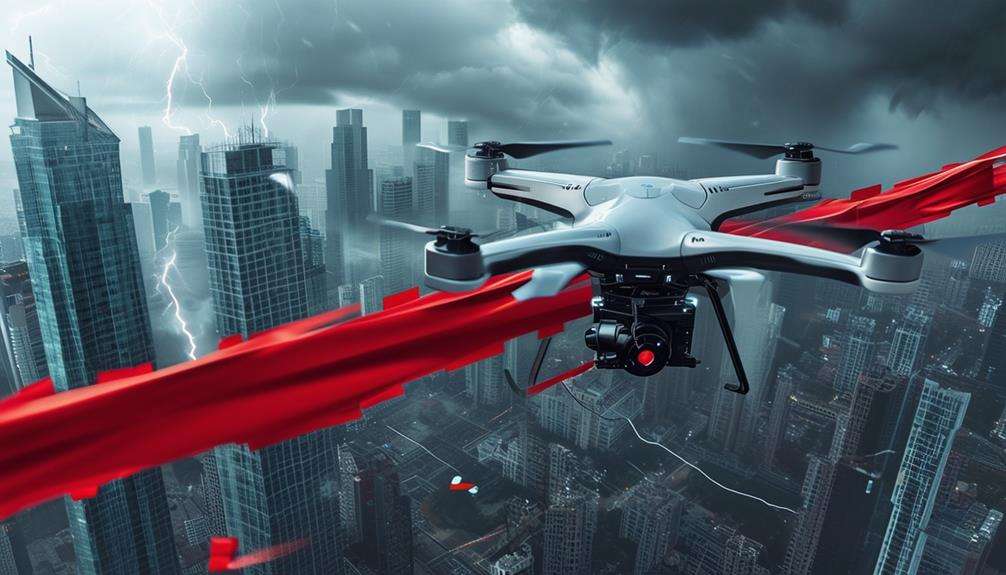
Navigating the commercial drone industry's landscape comes with its own set of challenges. Key issues such as regulations, safety, privacy, and public acceptance are critical to address for the industry's growth.
Here are some important considerations:
- Regulations: The regulatory environment is complex and varies significantly across regions. Each country has its own set of rules, creating difficulties for businesses aiming to operate on a global scale. Standardizing procedures is essential to streamline operations and drive growth.
- Safety Concerns: Ensuring the safety of drones and the public is of utmost importance. Effective solutions for airspace integration and collision avoidance are necessary. Addressing these safety concerns is crucial to prevent potential setbacks in the industry.
- Privacy and Security: Public concerns about privacy and data security are significant. There are worries about drones capturing unauthorized footage or sensitive information, leading to resistance against widespread adoption.
- Public Acceptance: Gaining public trust and acceptance is vital. Misunderstandings and negative perceptions can impede progress. Effective communication and education are needed to build public support.
Balancing innovation with safety measures and fostering collaboration among industry stakeholders, regulators, and the public is key to overcoming these challenges.
Job Creation and Opportunities
Addressing industry challenges is vital, but the commercial drone sector also offers significant job creation and opportunities. The United States UAV industry has generated over 70,000 jobs in its first three years of integration, highlighting the sector's economic potential. By 2025, it's projected that more than 100,000 jobs will be created as the industry continues to grow.
Job opportunities in this sector span various fields, including technology and manufacturing. The demand for skilled drone operators, software developers, and maintenance technicians is on the rise. Companies specializing in UAV technology are constantly seeking talent to innovate and enhance drone capabilities. This job creation not only supports the drone industry but also benefits related fields such as data analysis and logistics.
The economic impact of integrating drones into commercial applications is expected to exceed $13.6 billion. This growth significantly boosts employment rates, underscoring the positive contributions of the UAV industry. As the technology matures, continued job growth and sustained economic benefits are anticipated. The commercial drone sector presents a promising avenue for job creation and economic advancement in the United States.
Future Outlook
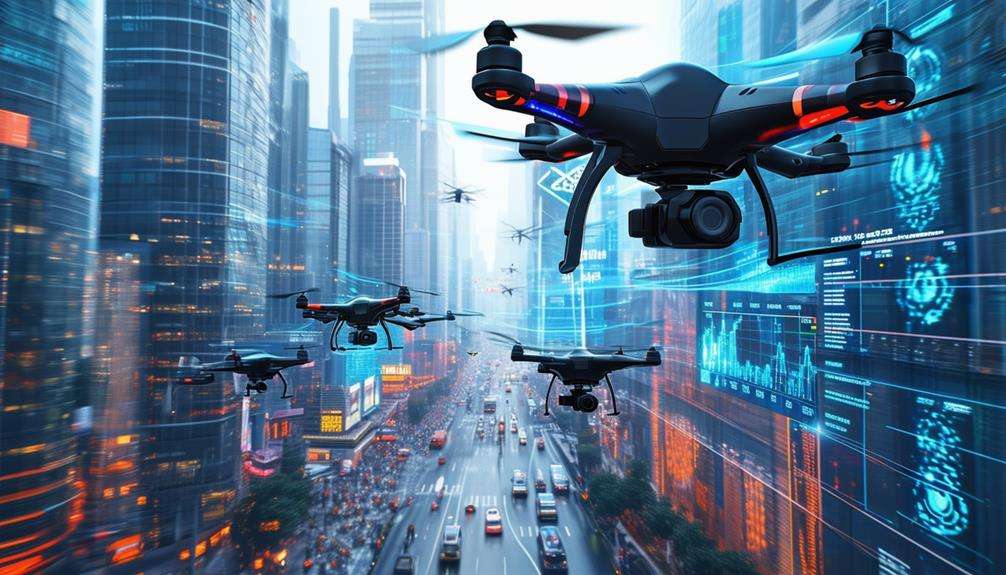
The future of the commercial drone industry appears exceptionally promising, with projections estimating its value at $92 billion by 2030. This robust growth is fueled by technological advancements and increasing adoption across various sectors.
In the United States, the industry is anticipated to lead globally, with annual spending on drones surpassing that of all other countries combined, highlighting the strategic importance and investment in UAVs.
Consider these key factors shaping the future of the commercial drone market:
- 5G Network Expansion: The deployment of faster and more reliable connectivity will enable more sophisticated and widespread drone operations, including real-time data collection and autonomous deliveries.
- FAA Certifications: With over 200,000 remote pilot certifications issued, the number of commercial drone pilots is expected to rise, bolstering industry growth and innovation.
- Pandemic Utilization: The use of drones for medical supply deliveries during the pandemic has showcased their versatility and potential for critical logistics, emphasizing their value in emergency situations.
- Sector Diversification: Drones are increasingly being adopted in agriculture, construction, and emergency services, driving further investment and innovation in these fields.
Conclusion
The commercial drone industry is transforming the economy, offering notable market growth, cost savings, and job creation. Despite existing challenges, the potential for innovation and economic advancement is substantial. As the industry continues to evolve, drones are poised to play a critical role in shaping the future. Stay tuned for exciting developments on the horizon!

